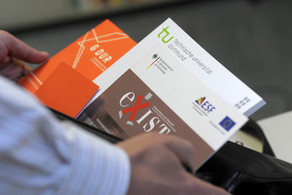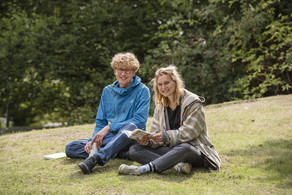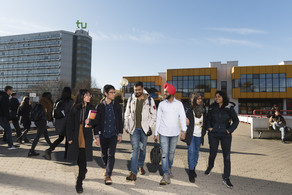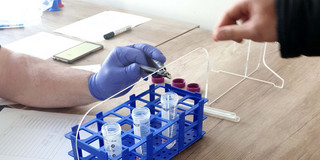TU Dortmund University Plans Hybrid Summer Semester with Testing Scheme
- Research
- Top News
- Studying & Teaching at TU Dortmund University
- Campus & Culture
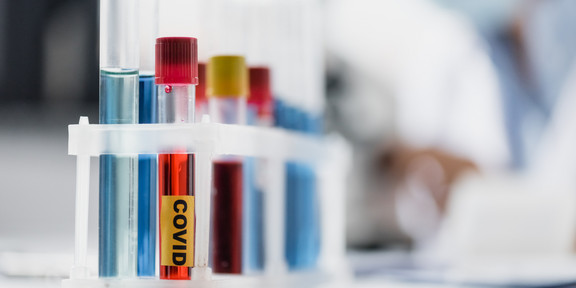
TU Dortmund University would like to partially return to on-site operations in the summer semester – but not without a testing scheme. Crisis Management at TU Dortmund University is supporting the “No Covid” initiative’s strategy, which recommends an opening of educational institutions accompanied by mass testing for the coronavirus. The university is therefore examining how testing could be phased in so that students and staff can work safely on campus and infections can be controlled.
TU Dortmund University is planning hybrid teaching for the 2021 summer semester: Since the coronavirus pandemic will continue to necessitate hygiene rules and social distancing, lecture halls filled to capacity from April onwards are unthinkable. A large number of classes will therefore continue to take place online. Laboratory and workshop classes cannot, however, be offered in a digital format, nor can practical tutorials in subjects such as music, art, sport or journalism. It is estimated that this affects around 20 percent of the 33,400 students at TU Dortmund University. For this group, the university is planning to introduce a testing scheme, which will also be open to staff.
“It’s important that our students do not lose another semester through the cancellation of practical classes,” says Professor Manfred Bayer, President of TU Dortmund University. “At the same time, we must prevent the number of infections from increasing and making another tough lockdown necessary.” Professor Matthias Schneider, head of Medical and Biological Physics at TU Dortmund University and member of the “No Covid” initiative, agrees: “Without an intelligent testing strategy, opening up at the present point in time would be counterproductive and detrimental.”
In its latest paper, the “No Covid” initiative explains why testing in contact networks such as educational institutions and work environments makes particular sense: “Eighty percent of all journeys connect households with schools and workplaces. If we could carry out blanket testing at these endpoints, these elements of people’s mobility would be effectively removed from the infection process. This would be a very efficient way to cut off potential infection pathways,” states the concept paper. It also recommends that rapid antigen tests are used for this purpose, where positive results are subsequently checked in the laboratory (PCR test). Alternatively, samples taken from whole groups could be collected and checked in the laboratory together. If a group tests positive, individual B samples are then analyzed.
Calculate own incidence rate
TU Dortmund University has started initial discussions with potential partners. By working together with a laboratory, the university could calculate its own incidence rate and monitor infections on campus. A positive test result means compulsory quarantine. If necessary, a whole course could be sent into voluntary self-isolation.
To ensure that contact tracing by public health departments works as quickly as possible, digital systems are also required. TU Dortmund University is already in a good position here, as students have already been able to check in and out online via a QR code in all group rooms from their seat since the winter semester. The university is open to further digital solutions.
First tests from mid-March
How the tests can be implemented on campus will already be tested on a small scale from mid-March onwards: A few laboratory classes are planned for this period which, in line with the current Coronavirus Protection Ordinance, are permitted, by way of exception, as in-person classes. Voluntary tests are to be offered here. In parallel, discussions are being held with the regional government and the City of Dortmund as to whether the testing strategy could lead to a further opening of on-site operations from mid-April and to these remaining open if the local incidence rate is kept under control.
“Our minimum goal is to be able to offer the necessary in-person classes through testing,” says Professor Manfred Bayer, the university’s president. “It would be even better if we could succeed in making TU Dortmund University a ‘green zone’ without a notable number of infections, so that campus life would also appear to be possible again.” A good example for the creation of “green zones” is Australia. There, a traffic light system regulates the necessary protection measures and the easing of restrictions, depending on the local incidence rate.
Further information:


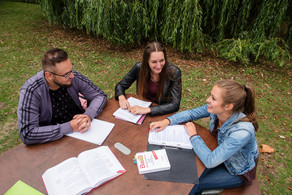
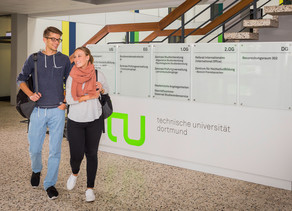
![[Translate to English:] Partner Four hands are holding the green logo of TU Dortmund University](/storages/tu_website/_processed_/1/d/csm_Partner_Nicole_Rechmann_KW_40b35bb3fd.jpg)

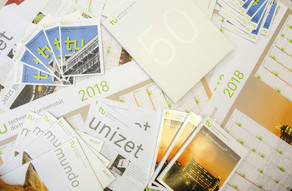

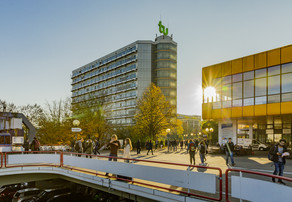
![[Translate to English:] Forschung An apparatus with tubes in a laboratory](/storages/tu_website/_processed_/0/c/csm_Forschung_Juergen_Huhn_cbd34afd6d.jpg)
![[Translate to English:] Studium Five students are sitting in a lecture hall. They are talking to each other.](/storages/tu_website/_processed_/c/9/csm_Studium_FelixSchmale_81d94adc86.jpg)
